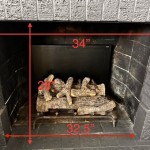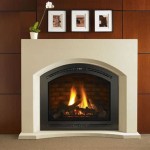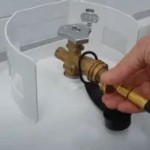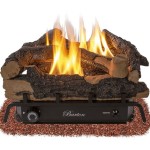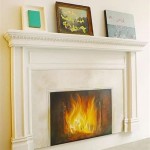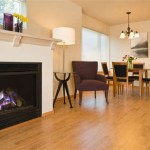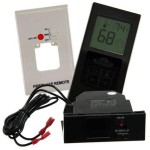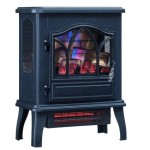Wood Burning Fireplace Insert With Blower Operation: A Comprehensive Overview
A wood-burning fireplace insert with a blower is a self-contained heating appliance designed to be installed within an existing masonry fireplace. These inserts offer a significant improvement in heating efficiency compared to traditional open fireplaces, which often draw heated air out of the room while providing limited radiant heat. By enclosing the fire in a sealed firebox and incorporating a blower, these inserts maximize heat output and distribute it effectively throughout the living space.
The core principle behind a wood-burning fireplace insert is to control combustion and extract as much heat as possible from the burning wood. A traditional fireplace, while aesthetically pleasing, loses a substantial amount of heat up the chimney. Inserts, on the other hand, are designed to burn wood more completely and efficiently, reducing creosote buildup and maximizing the amount of heat radiated into the room. The integrated blower further enhances this efficiency by circulating the heated air.
The operation of a wood-burning fireplace insert with a blower involves several key components working in concert. The firebox, typically constructed of cast iron or steel, houses the fire and is designed for optimal combustion. Air intake controls allow the user to regulate the amount of air entering the firebox, controlling the burn rate and heat output. The blower, usually located at the back or sides of the insert, draws cool air from the room, passes it over the heated firebox, and then forces the warmed air back into the room. This forced-air circulation significantly improves the distribution of heat compared to relying solely on radiant heat.
Enhanced Heating Efficiency and Cost Savings
One of the primary advantages of using a wood-burning fireplace insert with a blower is the substantial improvement in heating efficiency compared to traditional fireplaces. Open fireplaces are notoriously inefficient, often losing a significant portion of the heat generated up the chimney. This can lead to higher heating costs, especially in colder climates. A wood-burning insert, however, is designed to capture and radiate more heat into the room. The sealed firebox minimizes heat loss, and the blower actively circulates the heated air, ensuring that it is distributed throughout the space rather than escaping up the chimney. This increased efficiency translates directly into lower heating bills and a more comfortable living environment.
The cost savings associated with using a wood-burning insert can be significant over time. While the initial investment may be higher than other heating options, the reduced reliance on traditional heating systems, such as furnaces or electric heaters, can result in substantial savings on energy bills. Furthermore, wood, as a fuel source, is often more affordable than oil, propane, or electricity, depending on local availability and pricing. This cost-effectiveness makes wood-burning inserts an attractive option for homeowners looking to reduce their heating expenses.
The energy efficiency of a wood-burning insert is also influenced by its design and construction. Inserts with thicker firebox walls, airtight seals, and advanced combustion systems tend to be more efficient than those with simpler designs. The use of catalytic combustors or secondary combustion chambers can further enhance efficiency by burning off exhaust gases and reducing emissions. By choosing a high-efficiency insert, homeowners can maximize their heating savings and minimize their environmental impact.
Improved Safety and Environmental Considerations
Wood-burning fireplace inserts offer several safety advantages over traditional open fireplaces. The enclosed firebox prevents sparks and embers from escaping into the room, reducing the risk of fire hazards. This is particularly important in homes with children or pets. The controlled combustion process also reduces the amount of creosote buildup in the chimney, minimizing the risk of chimney fires. Regular chimney inspections and cleaning are still recommended, but the reduced creosote accumulation decreases the frequency and severity of potential chimney fires.
Despite concerns about air quality, modern wood-burning inserts are designed to minimize emissions and comply with environmental regulations. Many inserts are certified by the Environmental Protection Agency (EPA) and meet strict emission standards. These certified inserts utilize advanced combustion technologies to burn wood more cleanly and efficiently, reducing the amount of particulate matter released into the atmosphere. Proper installation and maintenance are crucial for ensuring optimal performance and minimizing emissions.
To further reduce environmental impact, it is important to burn seasoned wood in a wood-burning insert. Seasoned wood has a lower moisture content than green wood, which results in a cleaner and more efficient burn. Burning green wood can produce excessive smoke and creosote, increasing emissions and reducing heating efficiency. Selecting and properly storing wood is essential for maximizing the environmental benefits of using a wood-burning fireplace insert.
Operational Features and Maintenance Requirements
Wood-burning fireplace inserts with blowers often come equipped with a variety of operational features designed to enhance user convenience and control. Adjustable air intake controls allow users to regulate the burn rate and heat output of the insert. Some models also feature thermostatic controls that automatically adjust the blower speed based on the temperature of the firebox, maintaining a consistent and comfortable room temperature. Remote controls are also available on some models, allowing users to adjust settings from a distance.
Proper maintenance is crucial for ensuring the longevity and optimal performance of a wood-burning fireplace insert. Regular cleaning of the firebox and chimney is essential for removing ash and creosote buildup. The blower should also be inspected and cleaned periodically to ensure proper airflow. It is important to follow the manufacturer's recommendations for maintenance procedures and schedules. Ignoring maintenance requirements can lead to reduced efficiency, increased emissions, and potential safety hazards.
Chimney inspections should be conducted at least annually by a qualified professional. These inspections can identify potential problems, such as cracks, blockages, or excessive creosote buildup. Addressing these issues promptly can prevent more serious problems and ensure the safe and efficient operation of the wood-burning insert. A well-maintained insert will provide years of reliable heating and contribute to a comfortable and safe living environment.

Ventis Wood Burning Fireplace Insert With Blower Hei170 Hvacdirect Com

Best Wood Burning Fireplace Insert With Blower Forestry Reviews

Ventis Wood Burning Fireplace Insert With Blower Hei240 Hvacdirect Com

Best Wood Burning Fireplace Insert With Blower Forestry Reviews

Premium Wood Fireplace Inserts Made In Usa Lopi Stoves

Best Wood Burning Fireplace Insert With Blower Forestry Reviews

Napoleon S20i Sch1b3041 Wood Insert With Dual Blower System
.aspx?strip=all)
Cost Of Operating A Wood Insert Cord Calculator Regency

Wood Burning Fireplace Inserts 1 Stove Insert Dealer

Clydesdale Hearthstone Stoves
Related Posts

